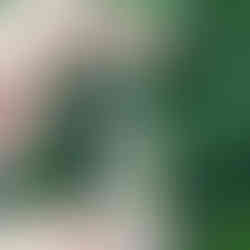top of page


Laurel B. Lujan
11 avr. 2025
"You'll see the word synthetic in the description. Be sure it says natural instead."
-Boodah.aq
Becoming holistic may mean a few things- consuming a cleaner and eco-friendly diet, meditating, and perhaps becoming more spiritually in tune. But, more than likely, a person may find their way by using crystals for their healing powers and motivate them to reach their intentions such as healthfulness, manifestations, or… just wanting to purchase them to wear or have around because they are pretty.
Currently, the crystal industry is worth $99 million in the U.S., according to the 2020 Gemstones Statistics report on USGS, Science for a Changing World for natural and synthetic stones. It has been said that the more the holistic industry grows, so does the stone industry. That may mean more money and more ethical labor, purchase, and supply chain problems. The crystals purchased for their healing properties are expected to be natural due to being mined from the Earth, not created in the lab.
With today's technology, it is easy to grow stones in a lab or create them with other materials to replicate them to profit by selling them online to retailers or unsuspecting customers. Imagine buying that cool green stone called moldavite. So, you purchase it as a necklace. Then, you scroll on social media like Instagram to find out that the "moldavite" you bought may be synthetic because the color does not reflect a true "moldavite" stone and two: it came cheap or too expensive from a questionable retailer.
Aliza Souleyeva-Alexander and Jason Finkelmen are two business owners in the crystal industry.
Alexander, the business owner of Soul Eye Jewelry, is a Canadian silversmith who creates and designs silver jewelry. Only six years ago she began making beaded jewelry but took the leap to learn silversmithing, a craft to create objects from silver three years ago to expand her creativity. Alexander is an artist who loves to create but took up jewelry making once she began to have a family to have the flexibility to spend time and take care of her children.

Instagram is filled with small business owners, including silversmiths like Alexander.
"The market is being saturated with so much talent… [because] so many people want to do this as a job now," says Alexander. "It is our job as silversmiths who deal with people who want to sell us the real stuff. So I prefer to support local lapidaries and raw stone [providers] to ensure it is the real deal, especially North American suppliers."
For almost every season, she focuses on a theme for her work that has inspired her to create. She has fun with the batch of stones she uses to be creative. In the summer of 2021, she posted alien-themed jewelry in her shop that sold fast.
She takes her art seriously and knows that the crystals' quality and origin play a large part in ethical shopping.
"The origin of the story makes [stones] more attractive," explains Alexander. "Opal, who doesn't love opal, right? Nowadays, it's easy to fake it. But people should know what's real; for example, aura opal is man-made. It's beautiful and looks gorgeous in jewelry, but it's man-made. It's a form or craft (making stones), but it has to be said in the buyer's description."
In her six years of silversmithing, she feels that staying local in supply is best to have an authentic product and be aware of contributing to controversial matters. For example, certain countries may have plentiful stones to sell due to the legal and illegal mining and many artists who create jewelry, but it can be lost through second and third-party selling.
"In Indonesia, many of the jewelry and stones are highly sought after, but it is second-hand, third-hand resellers that saturate the market stones, making it hard to find the origin of the stones and artists that create the jewelry. They're everywhere, unfortunately."
A diamond, for example, is another popular gemstone and has even obtained the nickname blood diamond due to the unethical mining in countries located in Africa, India, and others. Unethical is often applied to environmental hazards such as water waste and pollution, the air and the safety hazards brought on by mining which the locals will do for little to no pay. There is even the potential that gemstone and crystal mining is done through illegal slave trades worldwide.
Many people turning to crystals, especially for healing and holistic purposes, have caused growth to double in purchases of them from overseas from the U.S alone (for raw crystals), as stated in a 2019 The Guardian article.
Jason Finkelman, aka Boodah.aq the New Orleans native, and owner of Eagle Vision Crystals, has a more spiritual relationship with crystals. In 2015, he began his spiritual journey but only dabbled in it. It wasn't until 2017, he began to explore it fully by incorporating the use of crystal work. But in October 2020, he decided to make his own jewelry that gained traction on Instagram, where he began selling them due to high demand. He primarily sells wire-wrapped crystal jewelry and is now taking time to drop spiritual knowledge about the use of crystals, meditation, and numerology.

Crystals, for him, are healing; he does not solely sell his products based on aesthetics because he heavily pushes the crystal healing properties. He sees it as soothing and meditative during his creative process of wrapping the crystals.
"Once I started wrapping, I found it was therapeutic for me. So, it is kind of a meditation that I have… it will be weird [because] I will be listening to some deep esoteric information on the internet, YouTube or a tarot reading where the message comes out clearer."
The argument can be made that replicating gems and crystals in the lab is more eco-friendly than mining the Earth. Still, customers may disagree due to the popularity of wanting the "real" thing and being willing to pay a high price. Cubic Zirconium is the cheaper replica of a diamond in looks it shinier, more durable, more affordable to purchase, and cuts out the ethical issues a diamond has. Again, the status of having the real natural thing trumps the lab-created specimen.

"You actually have to look for jade, where I saw a TikTok video where they [business] actually showed how they make a jade statue mixing white and green resin, and it came out looking exactly like jade. A lot of jade can actually be resin that they mix it to make statues or jewelry," Finkelman explains.

He desires to purchase natural crystals to honor what he is drawn to spiritually and metaphysically as a seller. It is also just having an honest product that he can proudly stand by when his customers purchase it and wear. He also purchases local like Alexander but from a crystal shop located in the French Quarter called Earth Odyssey.
"I noticed when I am looking for inventory online, I have to make sure it is straight natural because at first you think it's natural, and then when you look at the description of the product, it says the product is dyed." Boodah further explains that dyed can still be considered natural due to the heating process, but he prefers his crystals to be all-natural. No technique giving crystals that unique, iridescent color will change his mind. Knowing that a heating process was done to the crystal to give it a different color does not draw him in despite its iridescent look.

Many crystals are often imitated for the sake of popularity and a money grab, such as turquoise, moldavite, opal, pearls and quartz. However, there are many more but small ways to determine if your stones are genuine. Boodah's advice is to take a quartz point and scratch it against the said crystal. If the mark rubs away, it is natural and if it stays, it is fake.
Heat treated crystals
Even when it comes to beads, Alexander said it is easy to fake those when the creator is expecting a certain quality of beads, especially when they are made from crystals. But, like Finkelman, she sees the crystal properties as beneficial for the customers and feels they need to have the best product if they choose to pay for something they wanted from a shop.
Another way of authenticating any crystal beads is the holes made by the drill. A genuine crystal bead will have rough edges to the spot since it is a mineral. It is more than likely unauthentic if the hole is too fine or smooth.

Between Finkelman and Alexandria, there is a common sentiment that customers should read the descriptions of the products they are thinking of purchasing.
Is it worth it to buy crystals if it has ethical repercussions like mining and hard labor and destroying the Earth or that it may be ingenuine? It's up to the buyer, seller, and supplier.
"There's a lot of fakes in the coming up from abroad; my advice is to be mindful where you buy it from, who is your supplier, and what mine it comes from," reminded Alexander. "Don't be afraid to ask questions. Ask the shop and who cut (the crystals)."
bottom of page





























